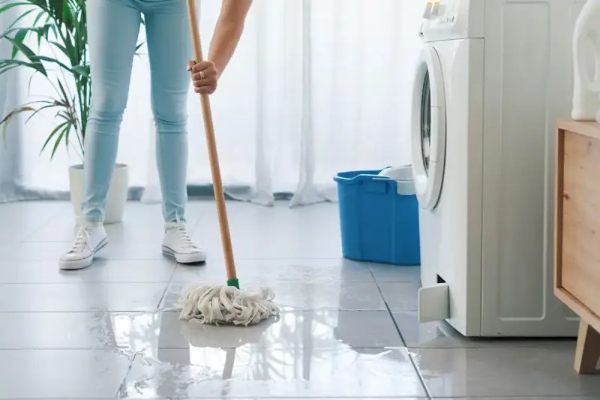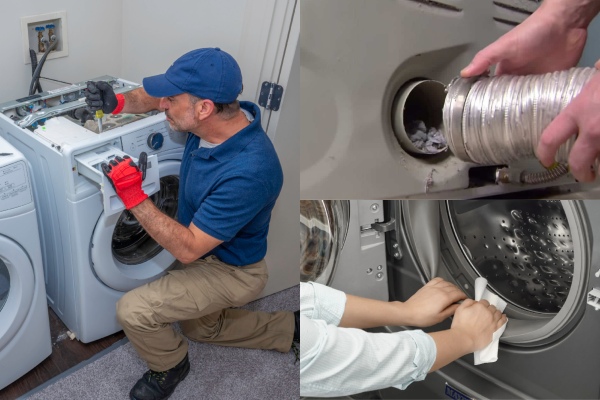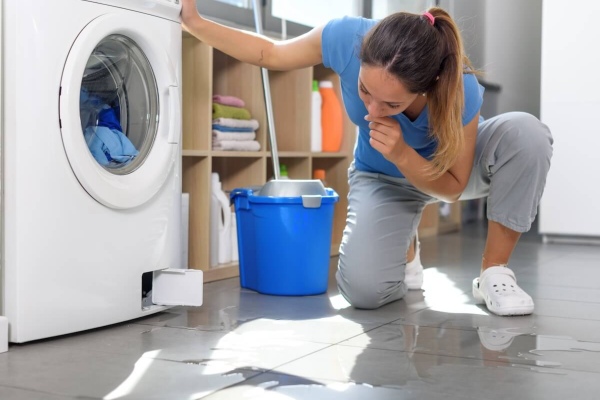The dryer is one of the functional and helpful household appliances that is used to dry clothes, bedding, and other textiles. However, over time, the machine may be having problems such as leaking water. This can make it work less efficiently and cause puddles to form on your laundry room floor. Similarly, water leaks can harm its electrical parts. If your dryer leaks water, first stop using it and fix it immediately.
Here we will talk about the most common issues with dryer leaks and ways of handling them.
What causes dryers to leak water?
There are several reasons for Dryer leaks, although most of them occur due to condensation or ice buildup because of insulation failure around the dryer’s exhaust duct. But a few of the major issues that can cause water problems include the following:
Blockage in the ventilation
The most common reason for a dryer leaking water is due to a vent that is blocked. The moment that hot dry air inside the dryer is unable to escape easily, it becomes water. This blockage is often caused by lint and fabric getting stuck. Check any of its bends in the ventilation hose and see if the lint screen is not blocked. You can also check the outside vent to see if there is good airflow or not just by a touch. To avoid these blockage problems, clean the ventilation system of the dryer once a year. Disconnect the hose and clean the system with a dryer vent cleaning kit or a vacuum cleaner.

Vent Duct Insulation
Another reason for leakage from the dryer might be condensation in the exhaust duct. If the exhaust duct is not well insulated, it can lead to the formation of ice or condensation, which causes leakages. So, the dryer duct needs to be insulated to prevent it from happening. You could do it by using the right insulating material yourself or can simply refer to a consultant for that. After the completion of the insulation process, try a test on the dryer to check whether the leaks stop.
Holes in the Ventilation Duct
Ensure that you inspect your ventilation system. Water could be leaking through the vent if there is damage such as holes or cracks. If you find any issues, the best solution is to replace it as it should be. Generally, you could use tape on holes. But, in the case in which holes are bigger, they should be repaired.
Faulty Vent Flap
The vent flap is one of the essential parts of a dryer vent system. It is located at the end of the vent system. The flap prevents rain, snow, and wind from entering the vent. It opens to let the dryer air out and stays closed at all other times. If the vent flap is broken or faulty then, rain, ice, or snow can go inside the pipe and create a situation by which water enters the dryer.
Unleveled Dryer
In case your dryer is not level, then it will leak water. This would happen if your dryer isn’t stable, which could be because the floor is uneven or there are problems with the dryer’s legs. This will cause the dryer to use more energy and take a longer time to use more energy. To stop leaks, check if your dryer is level using a tool called a spirit level. Adjust the legs of the dryer if they are not right. Make sure the floor where the dryer sits is flat too.

Damaged door malfunction
The door seal, also known as the door gasket, is a rubber or vinyl strip around the dryer door. It helps retain hot air and moisture inside while clothes are drying. Over time, if the seal gets torn or worn out, water can leak out and cause problems. To stop leaks, check the door seal often for damage and replace it if necessary. Make sure that during the drying process, the dryer door is closed tightly to maintain good sealing.
Reservoir filled with water
When using a condenser and heat pump dryer, the moisture collected during drying usually drips into a condensation reservoir. So, this reservoir needs to be regularly checked and emptied when it becomes full to prevent any potential overflow. In case the condensation reservoir overflows, water could damage nearby areas. So, it needs to inspect the reservoir for any damages, such as cracks or leakage.
Conclusion
In conclusion, addressing a leaking dryer promptly is crucial to maintain its efficiency and prevent potential damage. The common causes of the water leak in the dryer include blocked ventilation, poor insulation, damaged components of the dryer, and an unleveled dryer. Regular maintenance, such as cleaning the ventilation system, insulation of the exhaust duct, and checking for damages to the parts, may prevent the leak. If your dryer is leaking, turn it off immediately and take steps to eradicate the problem to avoid more complications. Regular inspections with timely repairs will keep your dryer running right while avoiding costly repairs later on.
Also read Why Won’t My Dryer Dry Properly? 11 Potential Explanations for Dryer Inefficiency
Frequently Asked Questions
1. Why does the dryer leak water?
The clothes dryer leaks in water for various reasons. Among the most common causes were blocked ventilation, insufficient insulation in the exhaust duct leading to condensation, and damage such as holes in the ventilation system.
2. How can I prevent my dryer from leaking water?
To prevent water leaks, keep the dryer’s ventilation system clean and free of blockages, such as lint and fabric buildup. Insulate the exhaust duct to prevent condensation. Check for damage or holes in the dryer vent flap regularly, and make sure the dryer’s door seal seals properly.
3. What should I do if my dryer is leaking water?
If you notice your dryer leaking in water, stop its use to avoid further damage. Check blockages in the ventilation system, and clean them out. Condensation or damage on the exhaust duct needs a check-up and insulation if necessary. Replace damaged components like vent flaps or door seals promptly.
4. Can an unleaved dryer cause water leaks?
Yes, an unleveled dryer can cause a water leak. A lack of stability in the dryer or the floor beneath the dryer may cause it to malfunction and eventually start leaking water.
5. How often should I clean my dryer’s ventilation system?
The dryer’s ventilation system should be cleaned at least once a year. Use a dryer vent cleaning kit or vacuum cleaner to remove lint and debris from the vent hose and inspect the outside vent for good airflow.
